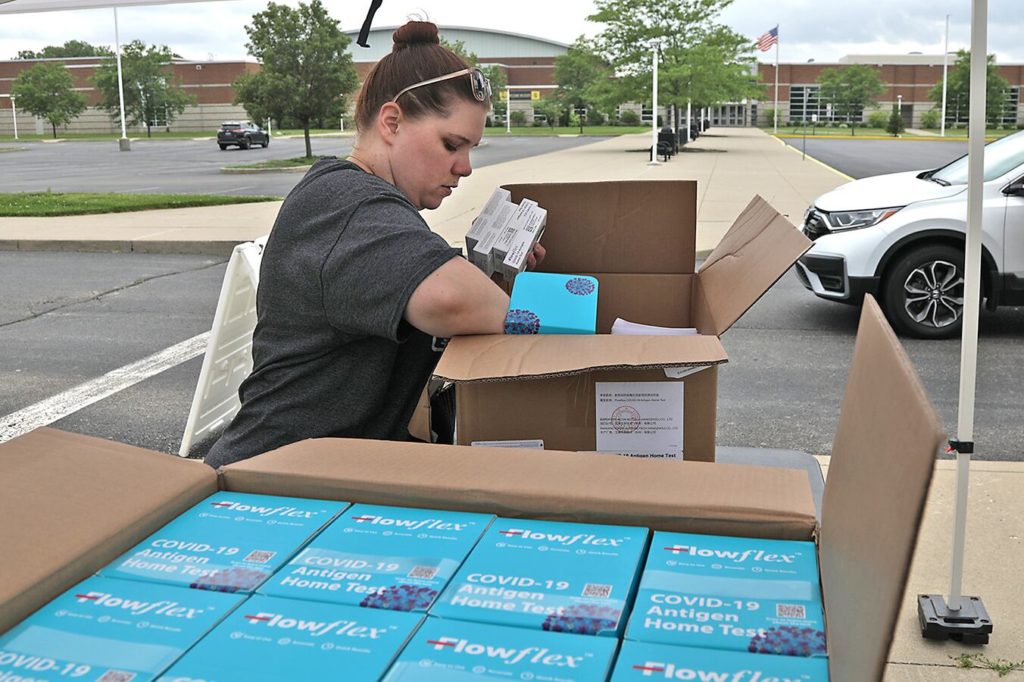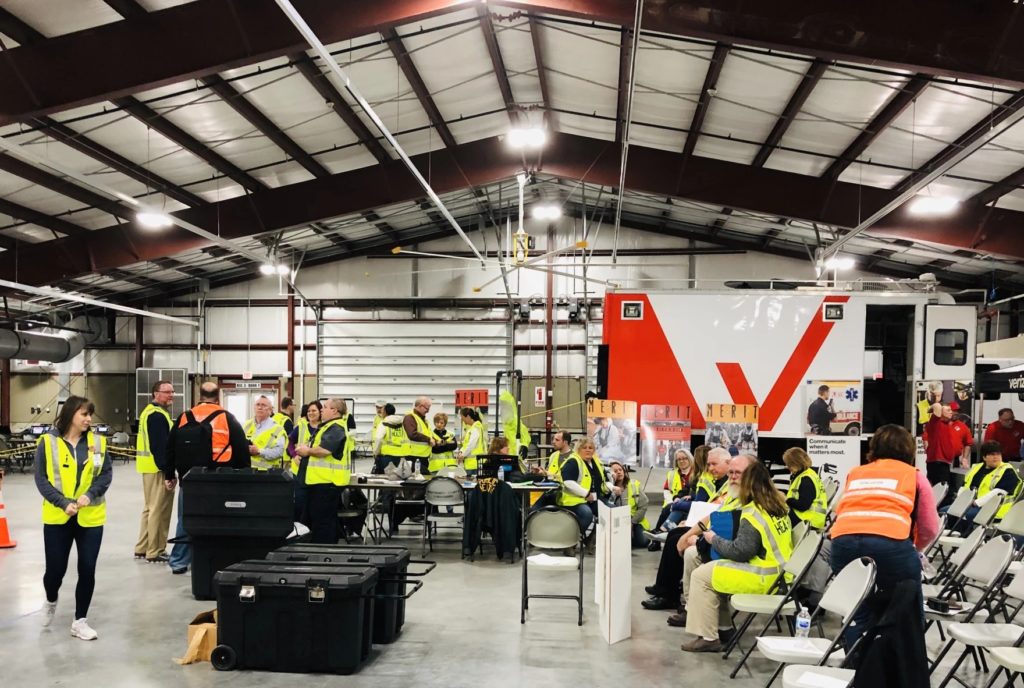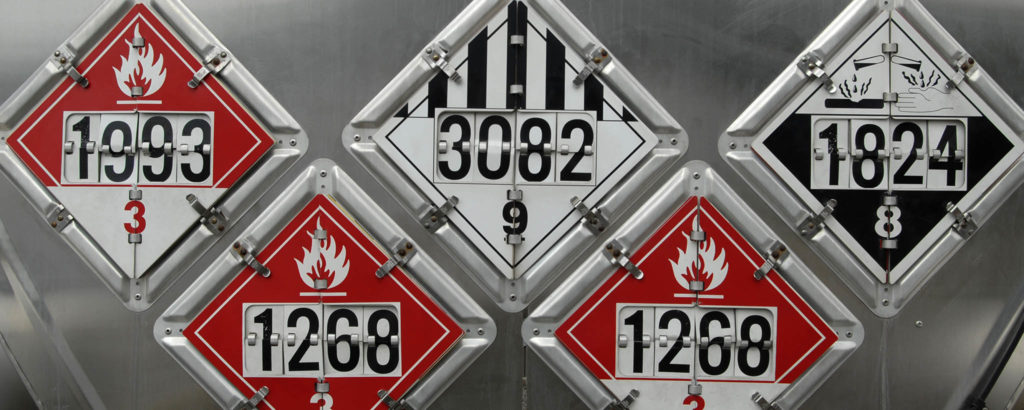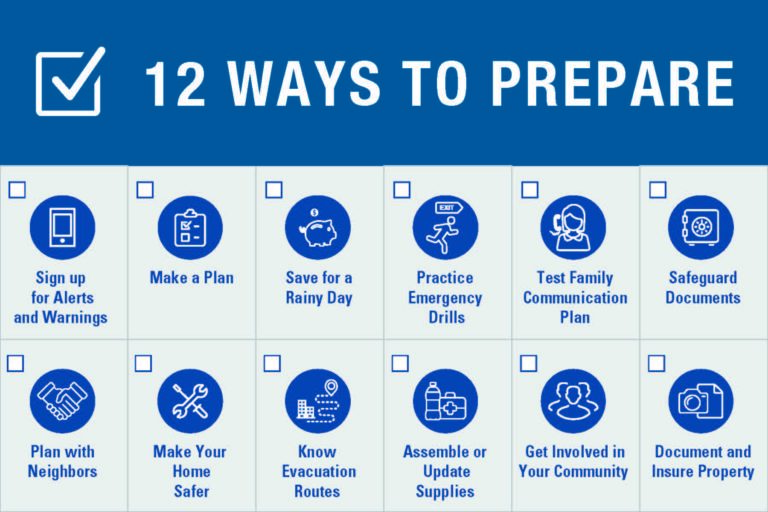What is Emergency Preparedness?
The Emergency Preparedness program is tasked with preparing Public Health, its partners, and the community to respond to adverse events that affects the public’s health in our community.
Activities are planned in cooperation with the public, healthcare and safety organizations in Clark County and surrounding counties ensuring the West Central Region of Ohio is ready for emergency events.
- Cooperative efforts with community, business, healthcare, security, and safety organizations have been enhanced to deal with any emergency event.
- Cooperative agreements have been developed with adjoining counties and healthcare organizations to strengthen the regional ability to provide mutual aid.
- We perform simulated “Adverse Event” training exercises annually with our regional partners.
- Maintains a staff ready to respond 24 hours a day 365 days a year to a health or community emergency
- All Public Health employees are emergency response trained
- Plans and coordinates response activities with the Clark County Emergency Management Agency
- Plans and coordinates response activities with local partners including the Greater Dayton Area Hospital Association, Police and Fire agencies and other partners.
- Plans and coordinates response efforts with surrounding health departments and the Ohio Department of Health
- Provides training to staff and community partners in emergency response efforts
- In the event of an emergency, provides timely, accurate and vital information about the situation
- Educates the community regarding how to prepare for emergencies
In Ohio, a communicable disease outbreak is defined as an unexpected pattern of cases, suspected cases, deaths, or increased incidence of a disease of major public health concern, which may indicate a newly recognized infectious agent, epidemic, related public health hazard, or act of bioterrorism. This definition aligns with Class B reportable diseases in Ohio, which are diseases of major public health concern due to their severity or potential for epidemic spread.
For more information on Communicable Diseases or to report a disease visit our Communicable Disease page

Severe weather can happen anytime. Severe weather can include hazardous conditions produced by thunderstorms, including damaging winds, tornadoes, large hail, flooding and flash flooding, and winter storms associated with freezing rain, sleet, snow and strong winds.
Radioactive contamination and radiation exposure could occur if radioactive materials are released into the environment as the result of an accident, an event in nature, or an act of terrorism. Such a release could expose people and contaminate their surroundings and personal property.
Visit Radiation Emergencies | Radiation Emergencies | CDC for more information on what to do if you are exposed to radiation

A bioterrorism attack is the deliberate release of viruses, bacteria, or other biological agents used to cause illness or death in people, animals, or plants. In the hands of the wrong people, materials intended for legitimate scientific, medical, or commercial use have the potential to harm large numbers of people.Although the anthrax attacks in the weeks following the 9/11 terrorist attacks focused national attention more acutely on our potential vulnerability; bioterrorism is not a new phenomenon. Throughout history, individuals and groups have used it as a weapon against both military and civilian populations.
- In one of the earliest recorded instances of bioterrorism, Persian armies in the 6th century BC poisoned wells with a fungus that affects rye plants (rye ergot).
- During the American Civil War, it was reported that a Kentucky physician provided clothing exposed to smallpox and yellow fever to Union troops.
In October 2001, bioterrorism in the U.S. became a reality again when four letters laced with anthrax were sent through the U.S. Postal Service. The attacks resulted in the illness in 22 people, the death of 5, and fear and anxiety in millions of others. The cost of decontaminating offices that were exposed totaled over $23 million.
- A chemical emergency happens when a hazardous chemical is released and the release could harm people’s health.
- Chemical emergencies can happen because of an accident, such as a train derailment, or through a deliberate release such as a terrorist attack.
- If a chemical emergency happens, take steps to protect yourself and your loved ones.
Some emergencies should be reported directly to emergency services, such as police and fire by calling 911. This includes medical emergencies when someone’s life is in immediate danger.
Other emergency situations such as those listed below should be reported to CCCHD, if the emergency is taking place within Clark County, Ohio.
Communicable Disease
For information on how to report a Communicable Disease, visit our Communicable Disease Page
Food or Waterborne Illness
For emergencies regarding food-borne or waterborne illness associated with facilities such as restaurants, grocery stores, festivals, swimming pools, etc. area hospital emergency rooms should report suspected food poisoning outbreaks involving two or more non-family members by calling 937-390-5600.
Fires in Public Food Operations
Local fire department and or facility management should call 937-390-5600 for fires at restaurants or grocery stores which result in potential contamination of food or utensils, or when a fire suppression system or sprinkler system has discharged.
Bioterrorist Incident
Local fire and police agencies should call 937-390-5600. to report any incident which alleges use of a biological agent (i.e., anthrax, smallpox, botulism, plague, tularemia, etc.) or chemical agent (i.e., sarin, cyanide, VX agent, etc.) to threaten the public health and safety.
Accidental Release of Air Pollutants
Local fire, police agencies and businesses should call 937-390-5600. To report accidental release of air pollutants which creates plumes or clouds of toxic air contaminants that may drift into residential areas and pose an IMMEDIATE THREAT to human health.
Water Pollution
Local fire, police agencies and businesses should call 937-390-5600. To report accidental releases or spills of chemicals or other contaminants such as a chemical tank truck crash or a train derailment causing a release of toxic chemicals into a water course that poses an IMMEDIATE THREAT to human health through contamination of private water supplies (private wells).
Dog Bites
Local physicians should call 937-390-5600 or fax a Bite Report to 937-390-5625 to report dog or other animal bites (wild or domestic) when animal is not routinely quarantined, and physician needs immediate information on rabies prophylactic measures.



